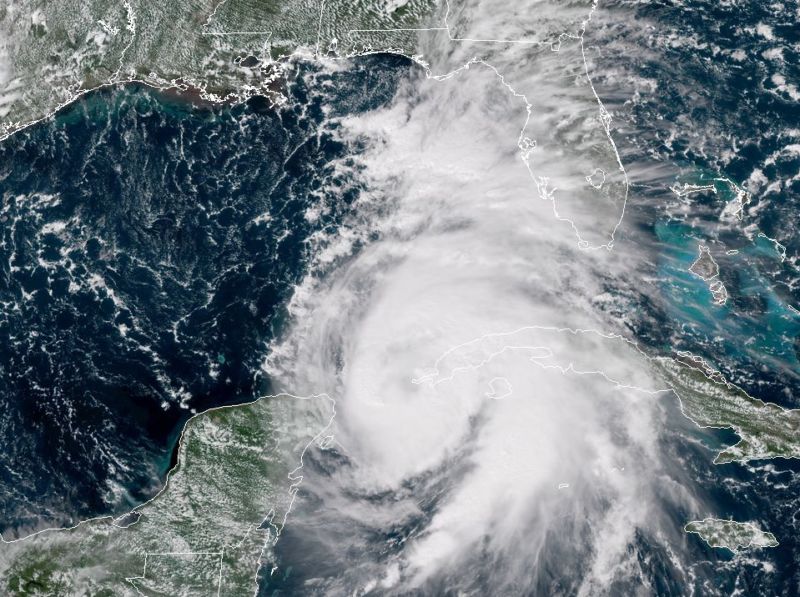
Enlarge / The center of Hurricane Michael passed near the western tip of Cuba on Monday afternoon. (credit: NOAA)
On Sunday, a tropical storm formed in the northern Caribbean Sea. Although few forecast models were predicting it would reach major hurricane status at the time, it seemed possible given that the storm was now moving away from the Yucatan Peninsula landmass and toward warmer waters in the southern Gulf of Mexico, where it will encounter lower overall wind shear.
By late Monday morning, Michael had become a hurricane, and forecasters at the National Hurricane Center now officially expect it to be a major Category 3 by Wednesday. That’s when Michael will make landfall along the northern Gulf coast, likely over the Florida Panhandle. The biggest concerns for the Florida coastline, particularly an area between Destin and Apalachicola, are strong winds and a damaging storm surge. Inland areas such as Tallahassee will also see significant effects. Rainfall is a lesser threat due to the storm’s progressive movement to the north.
It is rare but certainly not unheard of for major hurricanes to strike the United States in October—after all, the season does not end until November 30. However, by the middle of October, we are nearing the end of the season in terms of the greatest threat of hurricanes to land.
Read 5 remaining paragraphs | Comments
https://arstechnica.com/?p=1389751





